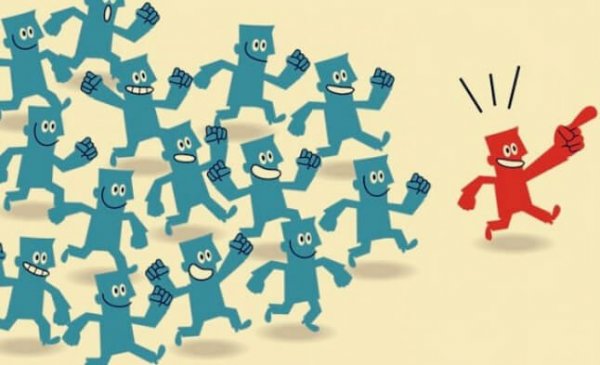Robert Cialdini and the 6 Principles of Persuasion

Robert Cialdini is a renowned psychologist and researcher at the University of Arizona (USA). He gained international recognition after publishing his first book, Influence: The Psychology of Persuasion, in 1984.
Robert Cialdini worked on the book for three years, relying on secrecy and deception. He infiltrated car dealerships, telemarketing companies, charitable organizations, and many others. The book brings together all his conclusions, and it’s become a major reference point in the psychology of persuasion.
“People are generally better persuaded by the reasons which they have themselves discovered than by those which have come into the mind of others.“
-Blaise Pascual-
His books have always been bestsellers upon release, according to New York Times Business. The magazine Fortune has also highlighted his work in a list of the 100 most intelligent books written in the past few decades. In the one we mentioned earlier, Robert Cialdini talked about 6 principles of persuasion that people are still using in all kinds of fields today. Here they are.
1. Reciprocity, Robert Cialdini’s first principle
During his research, Robert Cialdini found his first principle, one that most of us could guess from common sense. According to his findings, people treat others the way they feel others treat them. What that means is that you’ll be more friendly towards people who are friendly towards you, for example. So you actually have a lot of power to influence whether you get along well (or not) with someone.
Advertising uses this idea a lot. The reason brands sometimes give out their products for free has everything to do with the reciprocity principle. They know consumers will appreciate the gesture and will be more faithful to that brand as a result. One good example of this are all the fast food companies that give out free food after a professional sports team wins a game.

2. The scarcity principle
Robert Cialdini discovered that people tend to put more value on something they see as scarce or exclusive. It doesn’t matter whether it really is or not. The point is that, when something only seems accessible to a small group, it immediately makes people want it.
The advertising world takes advantage of this principle too. It’s the basis for ideas like a sale that only lasts a day or two, or a discount for the first 50 customers. There are all kinds of things along these lines, and they tend to work really well. But if they overuse the “last chance” concept in a small period of time, the effect starts to lose its power.
3. The authority principle
This principle says that people who have a position of power or high visibility also have more credibility in other people’s eyes. Other people will tend to believe them, whether they say “x”, “y”, or “z”. We’re just not as critical towards famous people.
That’s why a business focused entirely on so-called “influencers” can work so well. Other people want to identify with these people, so they copy them. In this context, they don’t worry much about whether these famous people are consistent in their ideas or not. They’re open to believing anything they say.

4. Commitment and consistency
Robert Cialdini says that the commitment and consistency principle means that people are more willing to do things that line up with what they’ve done in the past. It doesn’t matter whether or not they’re acting in a rational way. People tend to seek things that reaffirm their way of doing things, so they stick to what’s familiar.
This principle of persuasion is especially present in sales. In order to attract new customers, companies first study their behaviors and habits. This gives them a framework for what kind of offers to make to this particular customer. For example, if they’re impulsive, a company will try to create impulsive conditions for them to buy their product.
5. Social proof
This principle is about how people tend to stick with the group. They usually go along with whatever opinion has more people backing it up. If a lot of people think that something is right, other people will probably think that too, and vice versa. If most people think something is wrong, then a lot more will start to think the same thing.
That’s why the business and politics world both make huge efforts to “create trends”. They don’t always have a true or rational basis. But once they’ve succeeded in creating their “wave”, they’re almost always successful.

6. The liking principle
This principle involves something known as the “halo effect“. It has to do with the fact that physically attractive people have a much better ability to persuade us. We unconsciously associate them with other positive values like honesty and success. This effect can also happen in people who we like for reasons beyond physical attractiveness.
That’s why advertisements almost always use stereotypes that make you like what they’re selling. It could be beautiful models or people who represent the image of something that makes people want to be like them.

Robert Cialdini’s principles of persuasion have been applied in many different fields. The place where they’ve had the biggest impact, though, is in marketing. The modern idea of marketing is almost entirely based on his research.
This text is provided for informational purposes only and does not replace consultation with a professional. If in doubt, consult your specialist.








